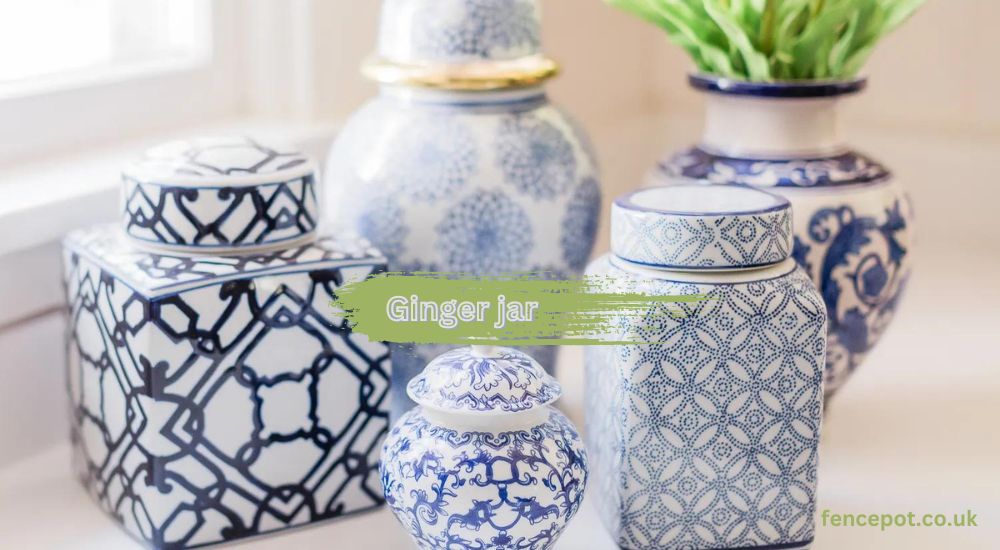Ginger jars are beautiful, timeless pieces that have fascinated collectors and decorators for centuries. Originating in ancient China, these jars have a rich history and cultural significance that spans the globe. In this article, we’ll delve into the world of jars, exploring their origins, cultural importance, and modern uses. Whether you’re a seasoned collector or simply curious about these exquisite objects, read on to discover everything you need to know about ginger.
The Origins of Ginger Jars
Ginger jars date back to the Tang Dynasty (618-907 AD) in China, where they were initially used to store valuable spices, including ginger. These jars were crafted from porcelain, a material prized for its durability and beauty. Over time, the design of jars evolved, becoming more ornate and decorative. As trade routes expanded, ginger began to appear in other parts of the world. They were particularly popular in Europe during the 17th and 18th centuries, where they were often used as decorative items in grand homes. The design and craftsmanship of ginger jars continued to evolve, reflecting the artistic trends of each era.
Cultural Importance
Ginger Jars in Chinese Culture
In Chinese culture, jars hold significant symbolic meaning. They are often associated with prosperity, happiness, and good fortune. Traditional Chinese weddings frequently feature jars as part of the decor, symbolizing the couple’s future happiness and abundance.
Global Influence and Popularity
The allure of ginger jars quickly spread beyond China, captivating the hearts of collectors and decorators worldwide. Today, these jars are cherished for their aesthetic appeal and historical significance, making them popular items in both traditional and contemporary home decor.
Traditional Materials Used
Ginger jars are typically made from high-quality porcelain, known for its smooth texture and strength. The porcelain is often glazed, giving the jars a glossy finish that enhances their beauty.
Iconic Design Features
Classic jars feature a bulbous body with a wide mouth and a domed lid. They are often adorned with intricate patterns, including floral motifs, dragons, and traditional Chinese scenes. The use of vibrant colors, such as blue and white, is also a hallmark of ginger jar design.
Types of Ginger Jars
Ginger jars come in a variety of shapes and sizes, each with its unique charm. Some common styles include the classic round jar, the hexagonal jar, and the elongated jar with a narrow neck. The patterns on jars are as diverse as their shapes. Popular themes include nature-inspired designs, such as flowers, birds, and fish, as well as geometric patterns and symbolic motifs like the double happiness symbol.
Uses of Ginger Jars
Originally, ginger jars were used for storing spices, oils, and other valuable goods. They were prized for their ability to keep contents fresh and protected. Today, the jars are primarily used as decorative pieces. They make stunning centerpieces, elegant vases for fresh flowers, and eye-catching accents on shelves and mantels. Their versatility allows them to complement a wide range of interior styles, from classic to contemporary.
Collecting Ginger Jars
If you’re interested in collecting jars, start by researching their history and identifying reputable sources. Look for jars with detailed craftsmanship and well-preserved patterns. It’s also important to verify the authenticity of each piece, as reproductions are common. Authentic ginger jars often have specific markings, such as the artist’s signature or a stamp indicating the period in which they were made. Examining the quality of the porcelain and the intricacy of the design can also help determine a jar’s authenticity.
Caring for Your Ginger Jars
To keep your ginger jars looking their best, clean them regularly with a soft, damp cloth. Avoid using harsh chemicals or abrasive materials that could damage the glaze. For stubborn stains, a gentle soap and water solution can be used. When displaying jars, consider placing them in areas where they can be admired without risk of damage. Shelves, mantels, and display cabinets are ideal spots. Grouping jars of different sizes and styles can create a visually appealing arrangement.
Decorating with Ginger Jars
Ginger jars can enhance any room in your home. In the living room, they can serve as elegant bookends or be placed on a coffee table as a conversation starter. In the dining room, they make beautiful centerpieces that add a touch of sophistication. Get creative with how you display your ginger. Consider using them as vases for fresh flowers or as storage containers for small items. You can also showcase them in pairs or clusters to create a dynamic visual effect.
Ginger Jars in Modern Art
Modern artists and designers have reimagined the ginger jar, incorporating contemporary elements while honoring traditional craftsmanship. These pieces often feature bold colors, abstract patterns, and unconventional shapes, offering a fresh take on a classic design. The influence of ginger can be seen in various aspects of modern design, from fashion to interior decor. Their timeless appeal and versatility make them a popular choice for designers seeking to blend tradition with innovation.
Where to Purchase
Ginger jars can be found at antique shops, specialty stores, and online marketplaces. When buying online, be sure to purchase from reputable sellers with positive reviews to ensure the quality and authenticity of your purchase.
Price Ranges and What to Look For
Prices for ginger jars can vary widely, depending on factors such as age, condition, and rarity. While some jars can be found for a few hundred dollars, rare and antique pieces may command prices in the thousands. When buying, look for jars with intricate designs, well-preserved patterns, and a smooth, glossy finish.
The Value of Ginger Jars
The value of a ginger jar is determined by several factors, including its age, condition, rarity, and provenance. Antique jars with historical significance or those created by renowned artists are often the most valuable. Collecting ginger can be a rewarding investment. As interest in these beautiful objects continues to grow, well-preserved and unique pieces are likely to appreciate in value over time. However, it’s important to collect what you love and enjoy the beauty and history of each piece.
Notable Collections and Museums
Some of the world’s most prestigious museums feature extensive collections of ginger jars. The Metropolitan Museum of Art in New York, the British Museum in London, and the National Palace Museum in Taipei are just a few examples of institutions that showcase these exquisite objects. Visiting museums with jar collections can provide valuable insights into their history and significance. These institutions often offer detailed information about the jars’ origins, cultural context, and artistic techniques.
Conclusion
Ginger jars are more than just beautiful decorative items; they are a testament to centuries of artistic tradition and cultural significance. From their origins in ancient China to their place in modern decor, these jars have a timeless appeal that continues to captivate collectors and enthusiasts worldwide. Whether you’re drawn to their intricate designs, historical value, or versatile uses,jars offer a unique blend of beauty and heritage. By understanding their history, recognizing authentic pieces, and incorporating them thoughtfully into your home, you can truly appreciate the charm and elegance of jars.
Read More interesting topic about bedroom













